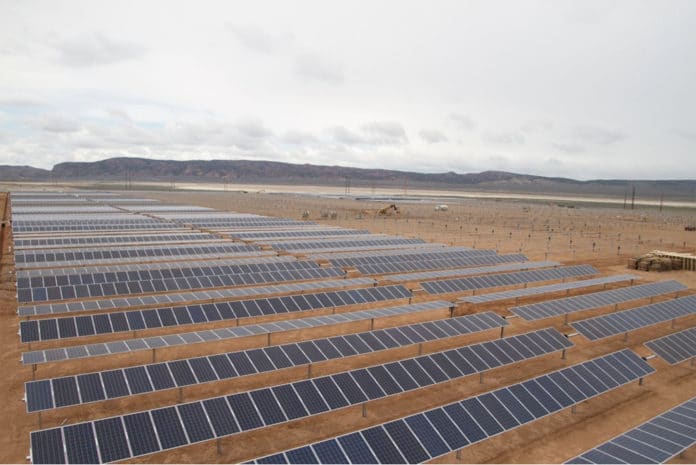With all of the stories of legislatures and utility commissions approving policies to undermine net metering and weaken the economics of customer-sited solar, it is easy to miss the progress being made in many states. This includes so-called “red” states that have been slower to adopt solar-friendly policies than states on the West Coast and Northeast.
As evidence of the latter, earlier this month Utah Governor Gary Herbert (R) signed three bills that support solar in the Beehive State, on scales ranging from the residential to the utility-scale.
SB 157 – consumer protection
As the first of these, the Governor has given his blessing to a bill that will require solar installers to provide a written disclosure to potential customers. The goal of this bill is to avoid any pricing misunderstandings and to curtail the ability of less-than-scrupulous salespeople to make misleading promises about the potential economics of their PV systems.
Solar Energy Industries Association (SEIA) says that the language in SB 157 is modeled on its consumer protection work, and follows similar bills in Florida, Nevada and New Mexico.
“The solar industry welcomes proactive consumer protection actions, like SB 157, which ensure transparency and an educated consumer, both essential ingredients for growing the solar market,” states SEIA VP of State Affairs Sean Gallagher. “These bills are a major win for Utah’s solar customers and businesses.”
Legislation may have come somewhat too late for New Mexico, where the state’s attorney general has filed suit against Vivint Solar. This case centers on Vivint’s presentation of a 2.9% annual escalator in the company’s 20-year power purchase agreement.
This is squarely addressed by SB 157, which says that any statement of projected savings must be accompanied by the following language (bold in original):
“THIS IS AN ESTIMATE. UTILITY RATES MAY GO UP OR DOWN AND ACTUAL SAVINGS, IF ANY, MAY VARY. HISTORICAL DATA ARE NOT NECESSARILY REPRESENTATIVE OF FUTURE RESULTS. FOR FURTHER INFORMATION REGARDING RATES, CONTACT YOUR LOCAL UTILITY OR THE STATE PUBLIC SERVICE COMMISSION.”
SB 141 – Extension of solar tax credit
The second bill signed by Governor Herbert extends a $1600 cap on the maximum credit each system can claim under Utah’s 25% solar tax credit for residential PV systems. The cap was initially set to drop down to $1200 at the end of this year, but will now stay at the $1600 level until 2020, after which it will decline $400 annually, and disappear after 2023.
This bill was also applauded by SEIA, which states that the bill provides “much-needed stability” for Utah’s solar industry which is struggling with the restructuring of net metering.
SB 261 – rate-basing solar
A press release by SEIA made no mention of the third bill, which unlike the first two will apply to large solar projects, not small systems for residential and small commercial customers. SB 261 creates a process for utilities to acquire solar projects via “rate-basing”, through which utilities charge their customers directly for the cost of acquiring or building assets.
Rate-basing is commonly used for other forms of generation, but often attracts push-back from consumer advocates who argue that utilities are pushing risks onto their customers. But as solar becomes more of a mainstream asset, utilities are more often asking to use this mechanism. Last December Tampa Electric asked Florida regulators for permission to “rate-base” 600 MW of solar which it plans to build.
SB 261 sets definitions for what kinds of PV projects can be rate-based, specifically excluding projects smaller than 2 MW on the customer side of the meter. It also specifies that utilities may only use this option if regulators decide it is the lowest price option.
This content is protected by copyright and may not be reused. If you want to cooperate with us and would like to reuse some of our content, please contact: editors@pv-magazine.com.









By submitting this form you agree to pv magazine using your data for the purposes of publishing your comment.
Your personal data will only be disclosed or otherwise transmitted to third parties for the purposes of spam filtering or if this is necessary for technical maintenance of the website. Any other transfer to third parties will not take place unless this is justified on the basis of applicable data protection regulations or if pv magazine is legally obliged to do so.
You may revoke this consent at any time with effect for the future, in which case your personal data will be deleted immediately. Otherwise, your data will be deleted if pv magazine has processed your request or the purpose of data storage is fulfilled.
Further information on data privacy can be found in our Data Protection Policy.